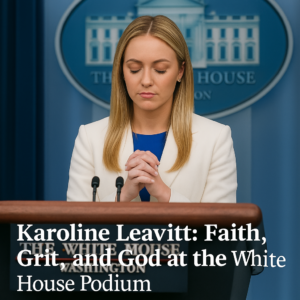Are Weather Weapons A Real Thing?

Recently, the world has witnessed an unprecedented spike in extreme weather events that some feel could be man-made or at least not completely natural. From devastating hurricanes, and unprecedented tornados to relentless droughts, these phenomena stir not only awe and fear but also speculation about their origins. Among the theories that persist within public discourse is the intriguing idea of weather manipulation—specifically, the existence of weather weapons and the practice of cloud seeding. This article delves into the historical roots, current applications, and potential implications of these technologies.
Weather Weapons: More Than Just Science Fiction
The concept of weather weapons might sound like a plot straight out of a science fiction novel, yet it has concrete historical foundations. During the Vietnam War, the U.S. military initiated “Operation Popeye”, a highly classified endeavor aimed at extending the monsoon season over specific areas of Vietnam. The objective was clear: to impede the movement of enemy troops and supplies. Through the dispersal of silver iodide into the clouds—a process known as cloud seeding—the U.S. successfully induced prolonged rainfall, effectively transforming weather into a tool of war.
Despite the cessation of such military practices following the Environmental Modification Convention (ENMOD) in 1978, which prohibited the use of environmental modification techniques for hostile purposes, the legacy of Operation Popeye has kept the idea of weather weapons alive. Today, while overt military use of weather modification technology is internationally banned, the advancements and applications of similar technologies continue to raise questions about their potential misuse. It is believed that several countries including Russia and China utilize these types of systems or at least have the military capability. So does the United States.
Cloud Seeding: A Reality in Weather Management
Unlike the controversial notion of weather weapons, cloud seeding is an openly acknowledged and widely used form of weather modification. It involves the introduction of substances into the atmosphere that serve as cloud condensation or ice nuclei, promoting cloud formation and precipitation. Governments and private entities in regions plagued by water scarcity, such as the United Arab Emirates and parts of the United States, regularly deploy cloud seeding to enhance rainfall, alleviate drought, and manage water resources.
Cloud seeding is not without its detractors, who often question its efficacy and potential long-term impacts on the environment. However, it remains one of the few scientifically recognized methods for influencing weather patterns on a relatively small scale.
Speculations and Concerns: Weather Manipulation Today
The advancements in technology have intensified speculations about weather manipulation. Some theorists suggest that the extreme weather events observed globally could be influenced by undisclosed uses of weather modification technologies.
Moreover, the increasing sophistication of geoengineering projects, which aim to supposedly counteract “climate change” through large-scale interventions in Earth’s climate system, further complicates the discourse. These projects highlight the potential for significant manipulation of environmental processes.
While weather weapons as tools of warfare may belong to the past, the technology capable of influencing weather patterns does exist in the form of cloud seeding and potential geoengineering practices. The debate over these technologies is complex, fueled by ethical, environmental, and geopolitical concerns. Also by world view. As we face more extreme weather events, the line between natural and man-made phenomena may grow increasingly blurred, urging a thoughtful consideration of our capabilities and their consequences. Are countries using weather weapons against us right now? Or is there perhaps a secret group of elites that wish to control the weather for nefarious purposes?
The concept of intentionally modifying the weather, often referred to as “geoengineering” or “climate engineering,” involves various techniques aimed at altering atmospheric conditions. One of the main methods used is the injection of aerosols into the atmosphere, a practice sometimes called “solar radiation management.” Here’s how it works:
Aerosol Injection
- What Are Aerosols? Aerosols are tiny particles or droplets suspended in the atmosphere. They can be natural, like dust or sea salt, or anthropogenic (human-made), such as sulfate particles resulting from burning fossil fuels.
- Injection Methods:
- Aircraft: Planes equipped with specialized equipment release aerosols at high altitudes.
- Ground-based Dispersal: Devices on the ground can release aerosols into the atmosphere.
- Marine Cloud Brightening: Ships spray seawater into the air to enhance cloud reflectivity.
- Types of Aerosols Used:
- Sulfur Dioxide (SO₂): When released into the stratosphere, it forms sulfate aerosols that reflect sunlight, mimicking the cooling effect observed after large volcanic eruptions.
- Calcium Carbonate or Other Particles: These are considered for their potential to reflect sunlight more effectively with fewer side effects.
Purpose and Effects
- Reflecting Sunlight: The primary goal of aerosol injection is to increase the Earth’s albedo (reflectivity), thereby reducing the amount of solar radiation that reaches the surface. This can help cool the planet and counteract what they claim to be “global warming”. Is this it’s real purpose though?
- Cloud Formation and Brightening: Aerosols can act as cloud condensation nuclei, leading to the formation of clouds or increasing their reflectivity. Brighter clouds reflect more sunlight back into space.
- Weather Modification:
- Rainfall Induction: Aerosols can also be used to induce rain by providing nuclei around which moisture can condense, a technique used in cloud seeding.
- Storm Suppression: Some theories suggest that dispersing aerosols could potentially influence storm formation and intensity.
Concerns and Risks
- Environmental Impact:
- Ozone Layer Depletion: Certain aerosols, particularly sulfur compounds, could potentially damage the ozone layer, which protects life on Earth from harmful UV radiation.
- Acid Rain: Sulfate aerosols can lead to acid rain, harming ecosystems and structures.
- Unintended Consequences:
- Weather Patterns: Altering atmospheric conditions could have unpredictable effects on global weather patterns, potentially causing droughts or flooding in unintended areas.
- Biodiversity: Changes in temperature and precipitation patterns could impact ecosystems and biodiversity.
- Ethical and Political Issues:
- Governance: Deciding who controls and regulates geoengineering efforts is a significant challenge.
- Moral Hazard: There’s a concern that reliance on geoengineering might reduce the urgency to cut greenhouse gas emissions.
In summary, while aerosol injection into the atmosphere to change the weather and climate has potential benefits, it also poses significant risks and uncertainties. It is a complex and controversial field that requires careful consideration and international cooperation. You can learn more HERE
High-Frequency Active Auroral Research Program (HAARP) and similar technologies are often discussed in the context of their potential to alter weather patterns. Here’s an explanation of how HAARP and comparable technologies might be used to influence weather and the theoretical concept of weather weapons.
HAARP: Overview and Functionality
- What is HAARP?
- The High-Frequency Active Auroral Research Program (HAARP) is an ionospheric research program jointly funded by the U.S. Air Force, the U.S. Navy, the Defense Advanced Research Projects Agency (DARPA), and the University of Alaska.
- Located in Gakona, Alaska, HAARP is a large array of antennas that send high-frequency (HF) radio waves into the ionosphere, the upper layer of the Earth’s atmosphere.
- Purpose of HAARP:
- The primary purpose of HAARP is to study the ionosphere and investigate its potential for enhancing communications and surveillance.
- Research includes understanding natural ionospheric processes that affect radio wave propagation.
Potential Weather Modification Capabilities
- Heating the Ionosphere:
- HAARP can direct high-frequency radio waves into the ionosphere, heating small regions. This heating can cause localized disturbances that might influence weather patterns.
- By altering the ionosphere, it may theoretically affect the movement of jet streams and pressure systems, potentially influencing weather.
- Creating Artificial Auroras:
- The energy emitted by HAARP can create small-scale auroras, which are visible disturbances in the ionosphere. These disturbances might interact with natural weather systems.
- Influencing Weather Patterns:
- By modifying the ionosphere, HAARP could potentially influence atmospheric phenomena such as the jet stream, which plays a crucial role in weather patterns.
- There is speculation that such modifications could lead to changes in precipitation, storm formation, and other weather events.
Weather Weapons: Concept and Theories
- Weather Weapons:
- The concept of weather weapons involves using technology to deliberately alter weather patterns to achieve military or strategic advantages.
- Potential applications might include causing droughts, floods, hurricanes, or other extreme weather events to disrupt an enemy’s infrastructure and resources.
- Historical Context:
- During the Vietnam War, Operation Popeye was a cloud-seeding operation intended to extend the monsoon season over specific areas, aiming to disrupt enemy supply routes.
- This historical precedent shows that weather modification for military purposes has been explored.
- Technological Challenges and Limitations:
- The science of weather modification is complex and not fully understood. Predicting and controlling weather patterns with precision remains a significant challenge.
- Ethical and legal issues also arise, as manipulating weather could have unintended consequences and potentially violate international treaties, such as the Environmental Modification Convention (ENMOD).






